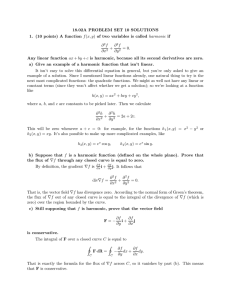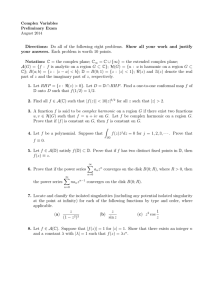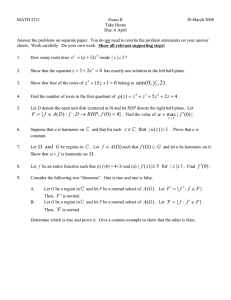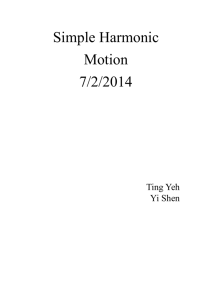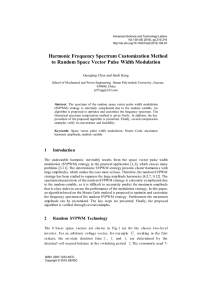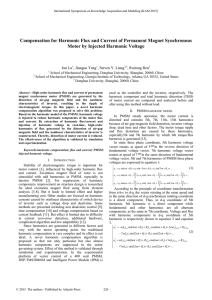18.02A PROBLEM SET 10 Due in recitation Thursday, February 19
advertisement
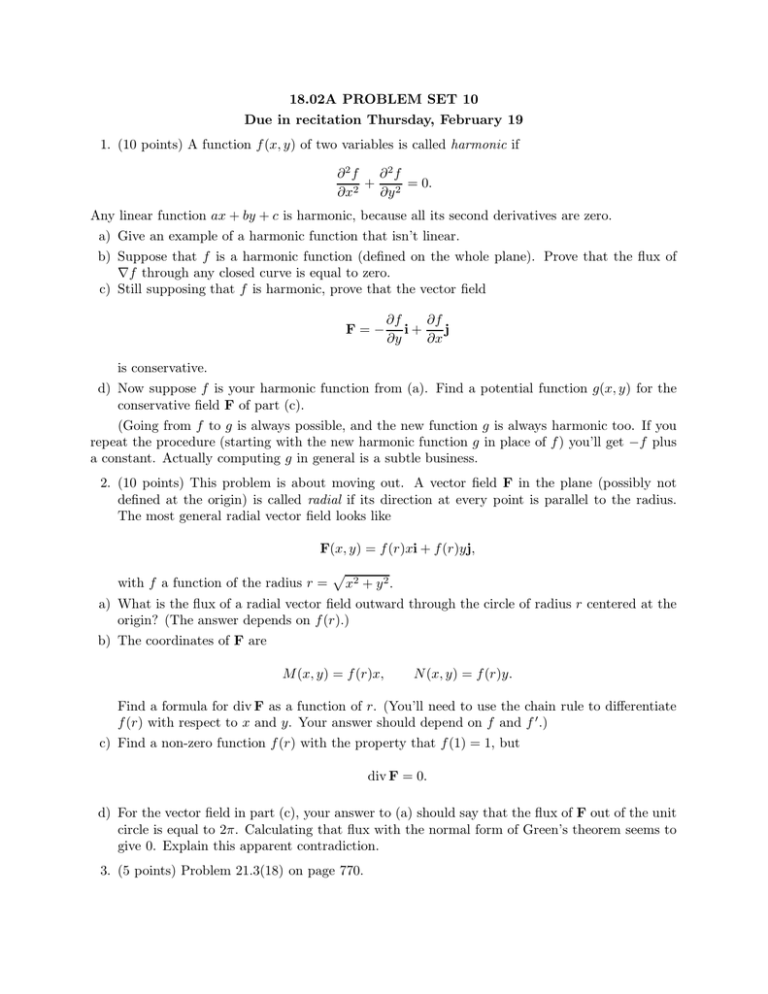
18.02A PROBLEM SET 10 Due in recitation Thursday, February 19 1. (10 points) A function f (x, y) of two variables is called harmonic if ∂2f ∂2f + = 0. ∂x2 ∂y 2 Any linear function ax + by + c is harmonic, because all its second derivatives are zero. a) Give an example of a harmonic function that isn’t linear. b) Suppose that f is a harmonic function (defined on the whole plane). Prove that the flux of ∇f through any closed curve is equal to zero. c) Still supposing that f is harmonic, prove that the vector field F=− ∂f ∂f i+ j ∂y ∂x is conservative. d) Now suppose f is your harmonic function from (a). Find a potential function g(x, y) for the conservative field F of part (c). (Going from f to g is always possible, and the new function g is always harmonic too. If you repeat the procedure (starting with the new harmonic function g in place of f ) you’ll get −f plus a constant. Actually computing g in general is a subtle business. 2. (10 points) This problem is about moving out. A vector field F in the plane (possibly not defined at the origin) is called radial if its direction at every point is parallel to the radius. The most general radial vector field looks like F(x, y) = f (r)xi + f (r)yj, p with f a function of the radius r = x2 + y 2 . a) What is the flux of a radial vector field outward through the circle of radius r centered at the origin? (The answer depends on f (r).) b) The coordinates of F are M (x, y) = f (r)x, N (x, y) = f (r)y. Find a formula for div F as a function of r. (You’ll need to use the chain rule to differentiate f (r) with respect to x and y. Your answer should depend on f and f 0 .) c) Find a non-zero function f (r) with the property that f (1) = 1, but div F = 0. d) For the vector field in part (c), your answer to (a) should say that the flux of F out of the unit circle is equal to 2π. Calculating that flux with the normal form of Green’s theorem seems to give 0. Explain this apparent contradiction. 3. (5 points) Problem 21.3(18) on page 770.

